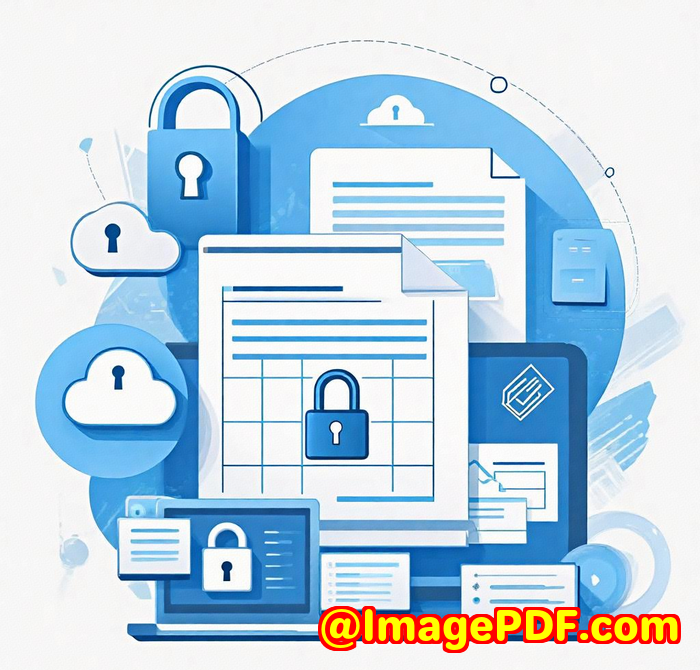How to Use PDF Annotation for Software Release Notes and Feedback
Meta Description:
Make software release notes and feedback way easier with this HTML5 PDF annotation toolworks in any browser, no plugins needed.
Every product sprint, the same problem came up...
We'd ship a new version of our software, throw together some release notes in PDF format, and send it out for internal review.

That's where the chaos started.
Some folks printed the PDF and scribbled feedback by hand. Others emailed paragraphs of text referencing vague line numbers. One even tried pasting screenshots in Slack with arrows drawn in MS Paint.
It was messy, slow, and let's be realnobody enjoyed it.
So I started looking for something better. Something easy for the team, browser-based, and powerful enough to handle collaborative annotation without forcing anyone to download a plugin or learn a new tool.
That's when I found VeryPDF HTML5 PDF Annotation Source Code License.
This tool was a game-changer for our dev cycle
I'll cut to the chase. If you're managing software documentation, release notes, bug reports, or user feedback, this thing is a cheat code.
I got the HTML5 PDF Annotation tool up and running in our internal web portal within a couple of hours. No crazy dev time. No dependencies. Just plug and play.
Here's the core idea: you load a PDF into your browseron any deviceand anyone can highlight, comment, draw, and tag parts of the document right there. No plugins. No Java. Just HTML5 and solid UI.
This thing supports over 50 file formats, including PDF, Word, Excel, PowerPoint, CAD files, and raster images. So it's not just for dev teams. Legal, design, QAeveryone can jump in.
How we use it (and why I won't go back)
Let me break down exactly how we use this in our dev workflow:
1. Internal Release Note Reviews
After every sprint, our tech writer uploads the draft release notes PDF. Then:
-
Product managers highlight sections they want rewritten.
-
Developers leave inline comments next to features they built.
-
QA testers draw arrows to bugs and leave point-specific notes.
Everyone can see each other's comments and collaborate in real time. No more email threads.
2. User Feedback on New Features
We send annotated feature mockups and ask beta testers to drop comments directly on the doc.
No need to explain, "On page 3, top-left, there's a typo" Just click, comment, done.
3. Remote Team Annotation
We've got folks across multiple time zones. Since this tool works in any browser on any OS (Windows, Mac, Linux, iOS, Android), it keeps things async and smooth.
What sold me (and what still surprises me)
Here are a few things I genuinely love:
-
Annotation layering: Everyone can add their notes without overwriting others.
-
Burn-in or export with annotations: Once the doc is final, we can export it with all markups flattened or removed. That flexibility is rare.
-
Customisability: Because we got the source code license, we can tweak the UI, hook into our back-end, and automate parts of the process.
Other tools we tried before were either locked behind paywalls, didn't support the formats we needed (looking at you, Word-only apps), or required downloads and plugins.
This one just works. It's fast, looks clean, and handles everything right in the browser.
Final thoughts: Would I recommend it?
Absolutely.
If you deal with PDFs for software release notes, client sign-offs, feedback cycles, or internal documentation, this is a no-brainer.
The VeryPDF HTML5 PDF Annotation Source Code License saved us from countless hours of confusion and miscommunication. It keeps everyone on the same pageliterally.
Click here to try it out for yourself:
https://veryutils.com/html5-pdf-annotation-source-code-license
Custom Development Services by VeryPDF
Got a complex project that goes beyond off-the-shelf solutions?
VeryPDF offers tailored development services across platforms like Windows, Linux, macOS, iOS, and Android. Whether you need PDF tools built in Python, JavaScript, C#, .NET, or even a virtual printer driver, they've got you covered.
They also specialise in:
-
System-wide monitoring of file and print jobs
-
OCR and barcode recognition
-
Secure PDF handling with DRM and digital signatures
-
Cross-format document conversions
-
Cloud-based solutions for document annotation, conversion, and viewing
Need something specific?
Reach out to their team here: http://support.verypdf.com/
FAQs
1. Can I annotate PDFs without installing anything?
Yes. It's 100% browser-based. No plugins. Works on Chrome, Firefox, Safari, Edgeyou name it.
2. Is it mobile friendly?
Totally. Works on iOS and Android devices right out of the box.
3. Can I integrate it into my own platform?
Yes, if you buy the source code license, it's fully customisable and easy to embed.
4. What file types are supported?
Over 50 typesincluding PDFs, Word docs, Excel sheets, PowerPoint slides, CAD files, and most image formats.
5. Can annotations be removed or burned into the file?
Yep. You can either keep them editable or burn them into the final version for distribution.
Tags/Keywords
-
PDF annotation for software release notes
-
HTML5 PDF annotation tool
-
browser-based PDF annotation
-
collaborative PDF markup
-
annotate PDFs without plugins